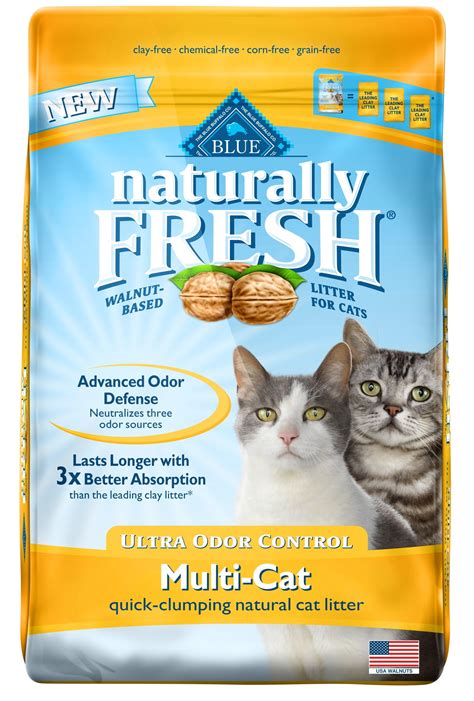Marketing Strategies for Walnut Cat Litter
1. Target Audience

- Target cat owners who prioritize natural and sustainable products.
- Aim for eco-conscious consumers seeking alternatives to traditional clay litter.
2. Key Messaging
- Emphasize the walnut shell’s natural odor control and absorption capabilities.
- Highlight the biodegradable and renewable qualities of the litter.
- Position the product as a premium option for discerning cat owners.
3. Brand Positioning
- Position the brand as a leader in sustainable cat litter solutions.
- Differentiate from competitors by focusing on the unique benefits of walnut shells.
- Establish a recognizable brand identity that resonates with target consumers.
4. Marketing Channels
- Utilize online platforms (e-commerce, social media) to reach eco-conscious consumers.
- Partner with pet supply stores and veterinarians to distribute the product.
- Engage in influencer marketing to generate buzz and build credibility.
5. Pricing Strategy
- Set a premium price to reflect the value and sustainability of the product.
- Offer discounts and incentives for bulk purchases or subscriptions.
- Adjust pricing based on market demand and competitive analysis.
Walnut Cat Litter VS. Clay Cat Litter
| Feature | Walnut Cat Litter | Clay Cat Litter |
|---|---|---|
| Odor Control | Excellent | Moderate |
| Absorption | High | Medium |
| Biodegradability | Yes | No |
| Sustainability | Yes | No |
| Dustiness | Low | High |
Benefits of Walnut Cat Litter Over Clay Cat Litter:
- Environmental friendliness: Biodegradable and renewable.
- Health benefits: Less dusty, reduces respiratory irritation.
- Cost-effectiveness: May last longer and require less frequent replacement.
Cons of Walnut Cat Litter:
- Higher cost: Premium price tag compared to clay litter.
- Availability: May not be as widely available as traditional litter.
- Tracking: May track more easily outside the litter box than clay litter.
Market Insights for Walnut Cat Litter
- Growing demand for sustainable pet products (projected to reach $12 billion by 2025).
- Increasing awareness of the environmental impact of pet ownership.
- Shift towards natural and biodegradable cat litter alternatives.
Future Trends and Innovations for Walnut Cat Litter
Emerging Applications:
- Sustainable biofuel source: Explore the potential for converting walnut shells into biofuel.
- Pet bedding material: Utilize walnut shells as a hypoallergenic and moisture-wicking bedding material.
Technological Advancements:
- Odor-enhancing additives: Develop additives to further enhance odor control and absorption capabilities.
- Litter box innovations: Design litter boxes that optimize the functionality and convenience of walnut litter.
Case Study: The Success of Cat’s Pride Walnut Cat Litter
- Launched in 2019, Cat’s Pride Walnut Cat Litter quickly gained market share.
- Differentiated itself by emphasizing its natural ingredients and sustainability.
- Partnered with influencers to promote the product and build brand awareness.
- Its success demonstrates the growing demand for sustainable and innovative cat litter solutions.
In-Depth Analysis of Walnut Cat Litter Marketing
Customer Segmentation:
- Eco-conscious consumers: Value sustainability and natural products.
- Discerning cat owners: Seek premium litter options for their pets.
- Health-conscious consumers: Prioritize litter that reduces respiratory irritation.
Messaging Strategies:
- Natural ingredients: Highlight the use of USDA-certified organic walnut shells.
- Environmental benefits: Emphasize the biodegradable and renewable nature of the litter.
- Health benefits: Position the litter as a hypoallergenic and dust-reducing option.
Brand Building Initiatives:
- Partnerships with animal welfare organizations: Demonstrate the company’s commitment to pet well-being.
- Social media campaigns: Engage with consumers, answer queries, and build brand loyalty.
- Sustainability initiatives: Publish reports on the company’s environmental practices and progress.
Marketing Metrics for Walnut Cat Litter
- Website traffic: Track website visits to measure brand awareness and interest.
- Social media engagement: Monitor likes, shares, and comments on social media posts.
- Sales data: Analyze sales figures to track revenue and market penetration.
- Customer reviews: Gather feedback from consumers to identify areas for improvement and build credibility.
Conclusion
Walnut cat litter presents a promising opportunity for marketers seeking to cater to the growing demand for sustainable and innovative pet products. By understanding the target market, utilizing effective messaging strategies, and leveraging emerging trends, companies can position their walnut cat litter brands for success in the thriving pet care industry.





















